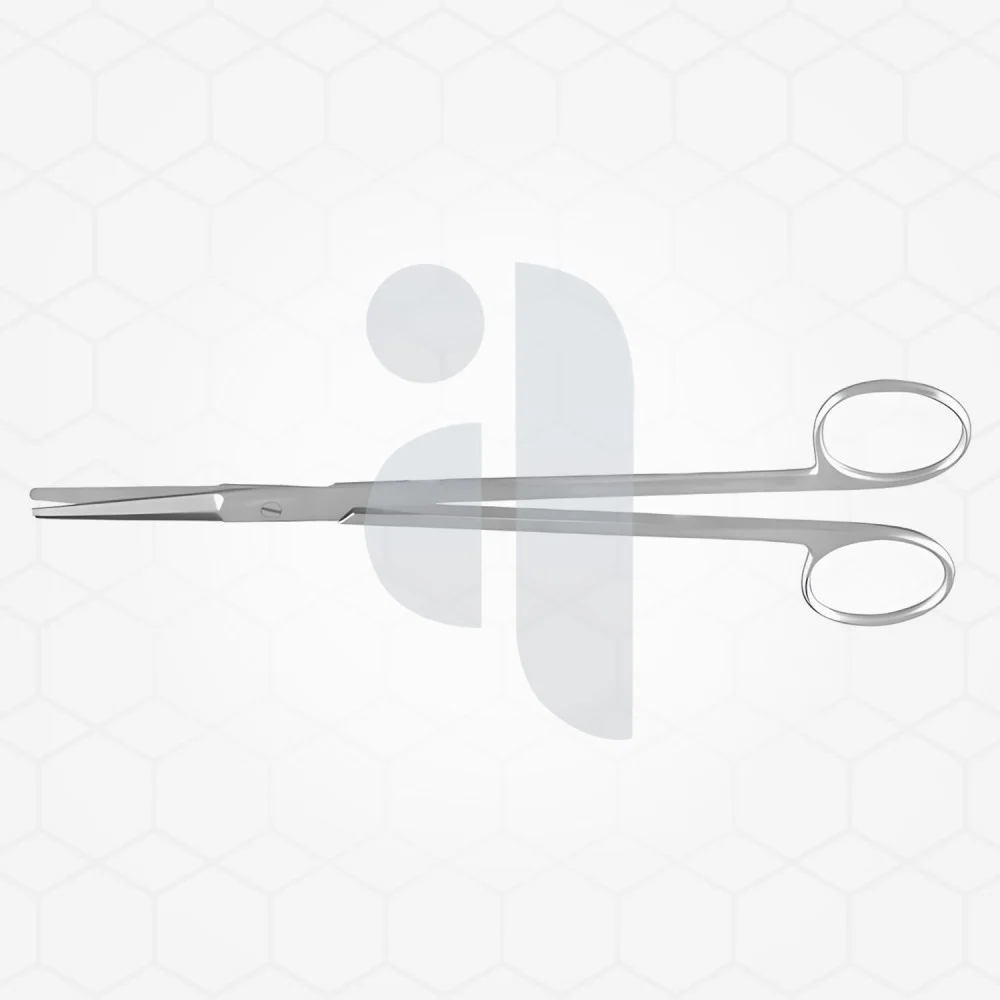The Essential Guide to Dissecting Scissors in Surgery

Precision and reliability are non-negotiable in the operating room. Every incision, every movement, and every tool must perform flawlessly. Among the most fundamental instruments in any surgical kit are dissecting scissors. These specialized tools are not just for cutting; they are an extension of the surgeon's hands, designed for delicate tissue separation and precise dissection. Understanding their function, variety, and the importance of quality is crucial for any medical professional.
Azeemed Instruments is dedicated to this principle of excellence. We understand that the performance of a surgical instrument directly impacts patient outcomes. That’s why we are committed to providing high-quality surgical tools that meet the rigorous demands of professionals. This guide explores the critical role of dissecting scissors, their different types, and why choosing a superior instrument is essential for surgical success.

The Role of Dissection in Surgical Procedures
Dissection is the careful separation of anatomical structures, a foundational step in countless surgical interventions. This process requires instruments that can separate tissue layers without causing unnecessary trauma. While other tools like the Langenbeck elevator are used for retracting and exposing tissue, dissecting scissors are specifically engineered for the delicate task of cutting and separating soft tissues. Their design allows surgeons to navigate complex anatomical landscapes with confidence, ensuring clean cuts and minimal damage to surrounding areas. The effectiveness of a procedure often hinges on the quality of the dissection performed.
The sharpness and balance of these scissors are paramount. A dull or poorly constructed pair can crush tissue rather than cut it, leading to increased post-operative inflammation and slower healing. Surgeons rely on the tactile feedback from their instruments to guide their work. A well-made pair of dissecting scissors provides this feedback, allowing for a nuanced approach to tissue handling that is both safe and effective.
Types of Dissecting Scissors and Their Applications
The world of surgical instruments is diverse, and dissection scissors are no exception. They come in various shapes and sizes, each tailored for specific procedures and tissue types. The choice of scissor depends entirely on the surgical context, from general surgery to highly specialized fields like neurosurgery or ophthalmology.
One of the most common distinctions is between straight and curved blades. Straight-bladed scissors, like standard Mayo scissors, are ideal for cutting surface tissues and sutures. Their straightforward design provides power and precision for more robust applications. In contrast, curved scissors, such as Metzenbaum scissors, are designed to dissect delicate tissues in deeper, more confined spaces. The curve of the blade follows the natural contours of the body, allowing the surgeon to see the tips clearly while cutting. This design is crucial for preventing accidental injury to underlying structures. The length of the shank and the sharpness of the tips also vary, providing further specialization for different surgical needs.
Why Quality Matters in Surgical Instruments
In surgery, there is no room for compromise. The quality of a surgical tool can be the difference between a successful procedure and a complicated one. Inferior instruments are prone to corrosion, may lose their sharpness quickly, and can even break under stress. This not only compromises patient safety but also adds to the financial burden of medical facilities due to frequent replacements. Azeemed Instruments recognizes that professionals need tools they can trust implicitly.
Our commitment is to provide surgical instruments crafted from the highest-grade materials, ensuring durability, reliability, and exceptional performance. Each pair of dissecting scissors we offer is manufactured to meet stringent quality standards. This dedication means surgeons can perform their work with greater precision and confidence, knowing their tools will function perfectly every time. Investing in high-quality instruments is an investment in better patient care and more efficient surgical practice.
Proper Care and Handling for Longevity
Even the best surgical instruments require proper care to maintain their integrity. The longevity of dissecting scissors depends heavily on correct cleaning, sterilization, and handling protocols. After each use, instruments should be thoroughly cleaned to remove all biological debris before sterilization. Using appropriate cleaning agents and techniques prevents corrosion and damage to the blades.
During sterilization, it's important to follow the manufacturer's guidelines to avoid compromising the instrument's material properties. Proper storage is also key; instruments should be stored in a dry, protected environment to prevent damage to the delicate tips and cutting edges. By adhering to these best practices, medical facilities can extend the life of their instruments, ensuring they remain reliable and effective for years to come. Azeemed Instruments provides tools built to last, but their ultimate longevity is a shared responsibility. Choosing quality from the start and maintaining it through proper care is the formula for surgical excellence.
- Art
- Causes
- Crafts
- Dance
- Drinks
- Film
- Fitness
- Food
- Jeux
- Gardening
- Health
- Domicile
- Literature
- Music
- Networking
- Autre
- Party
- Religion
- Shopping
- Sports
- Theater
- Wellness


